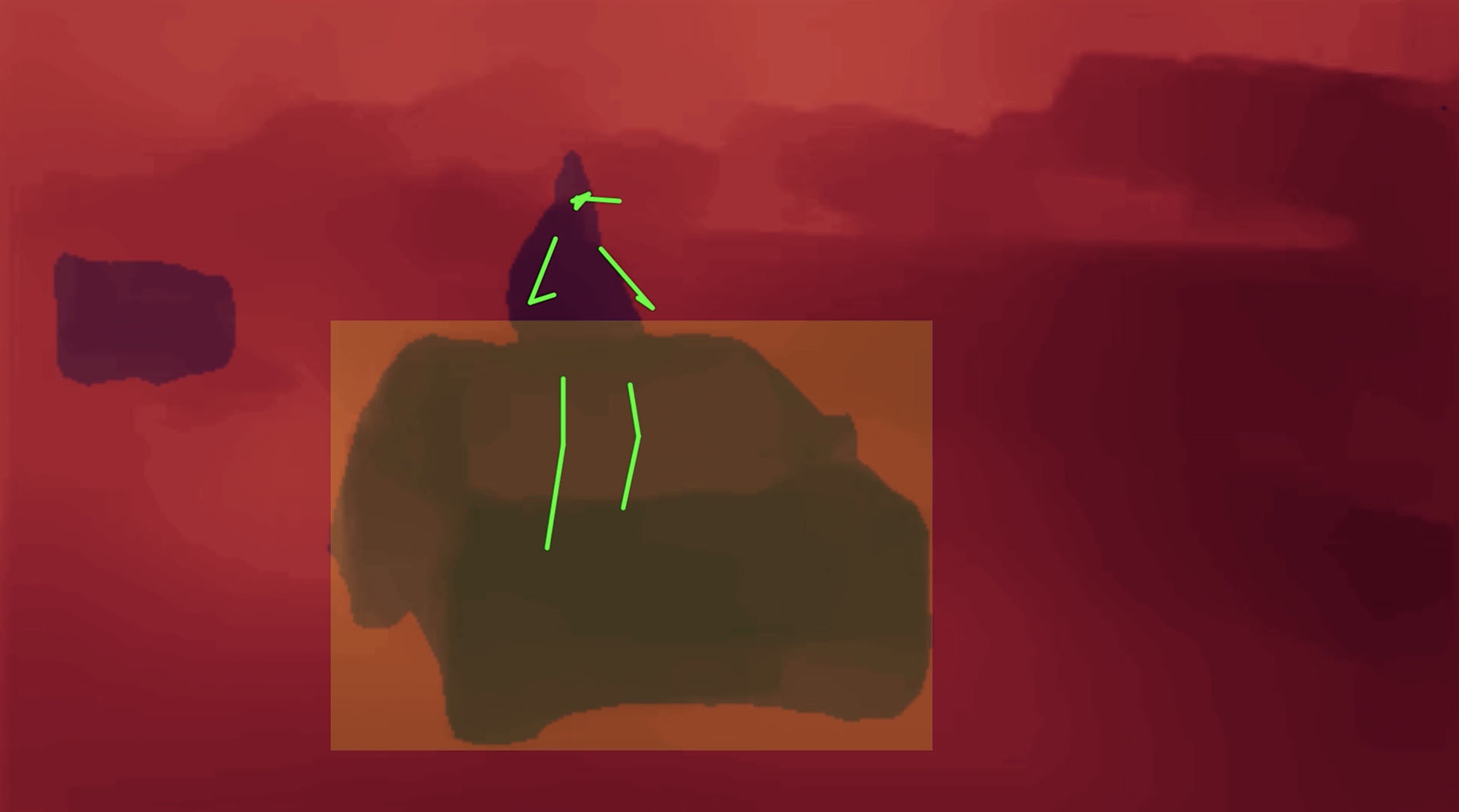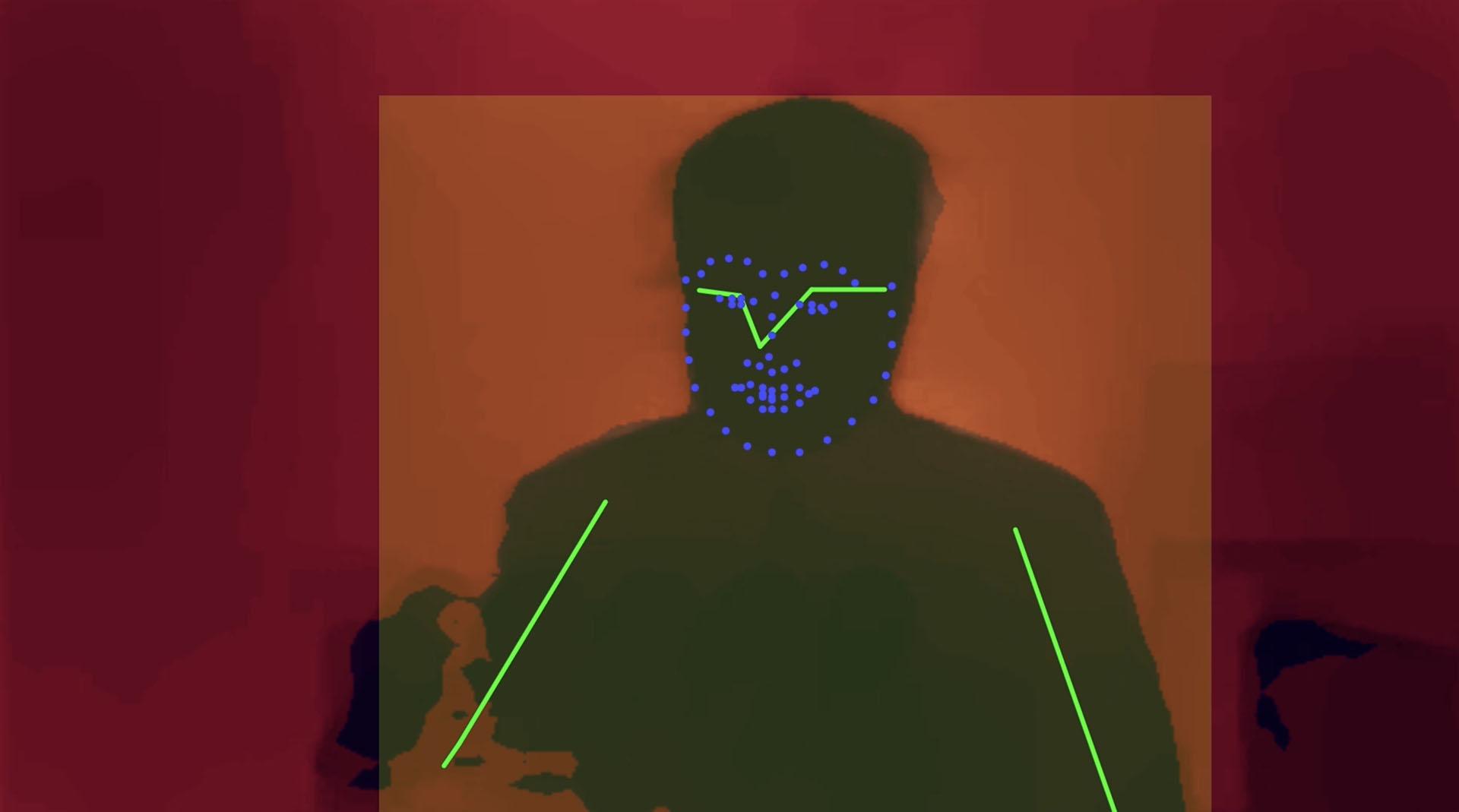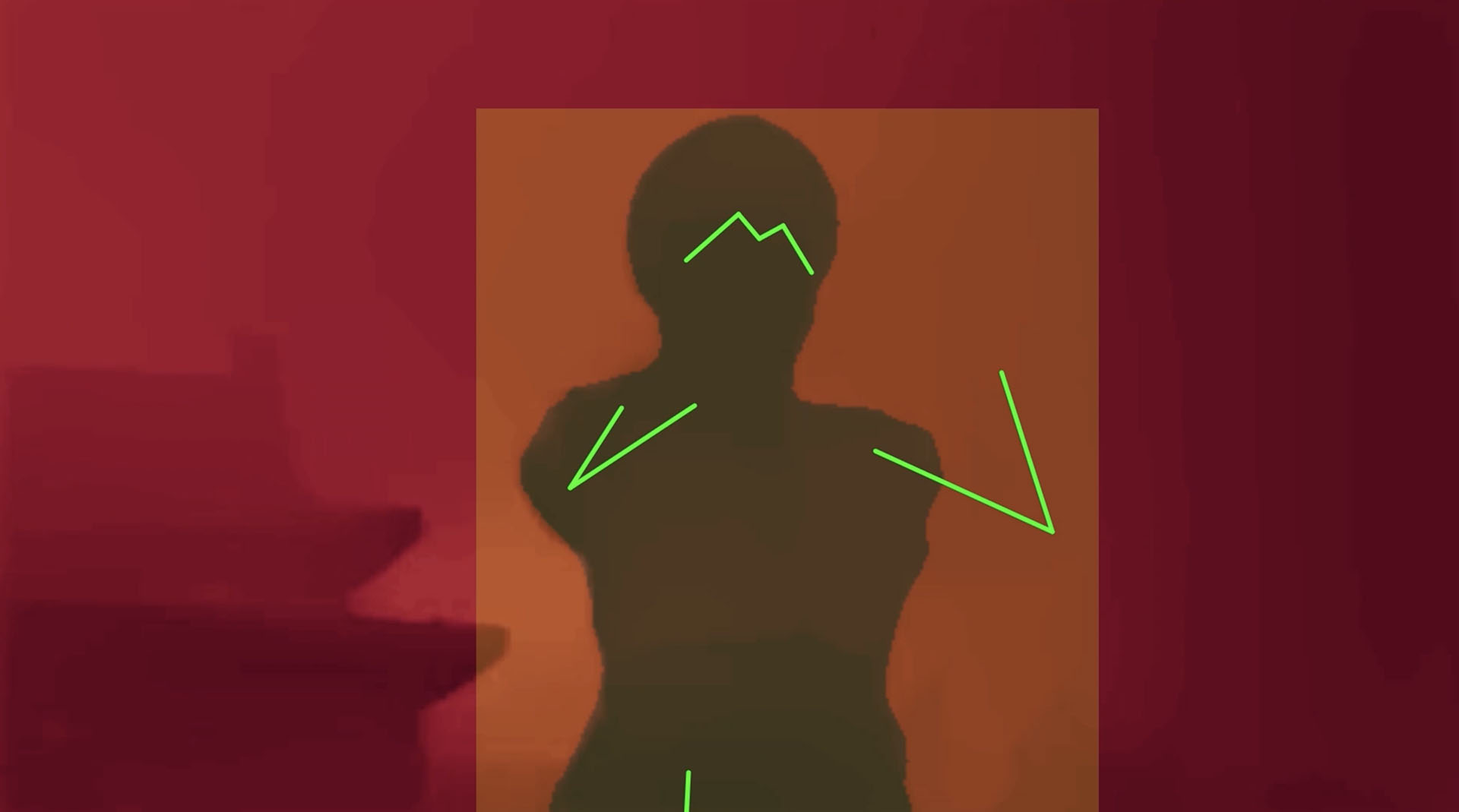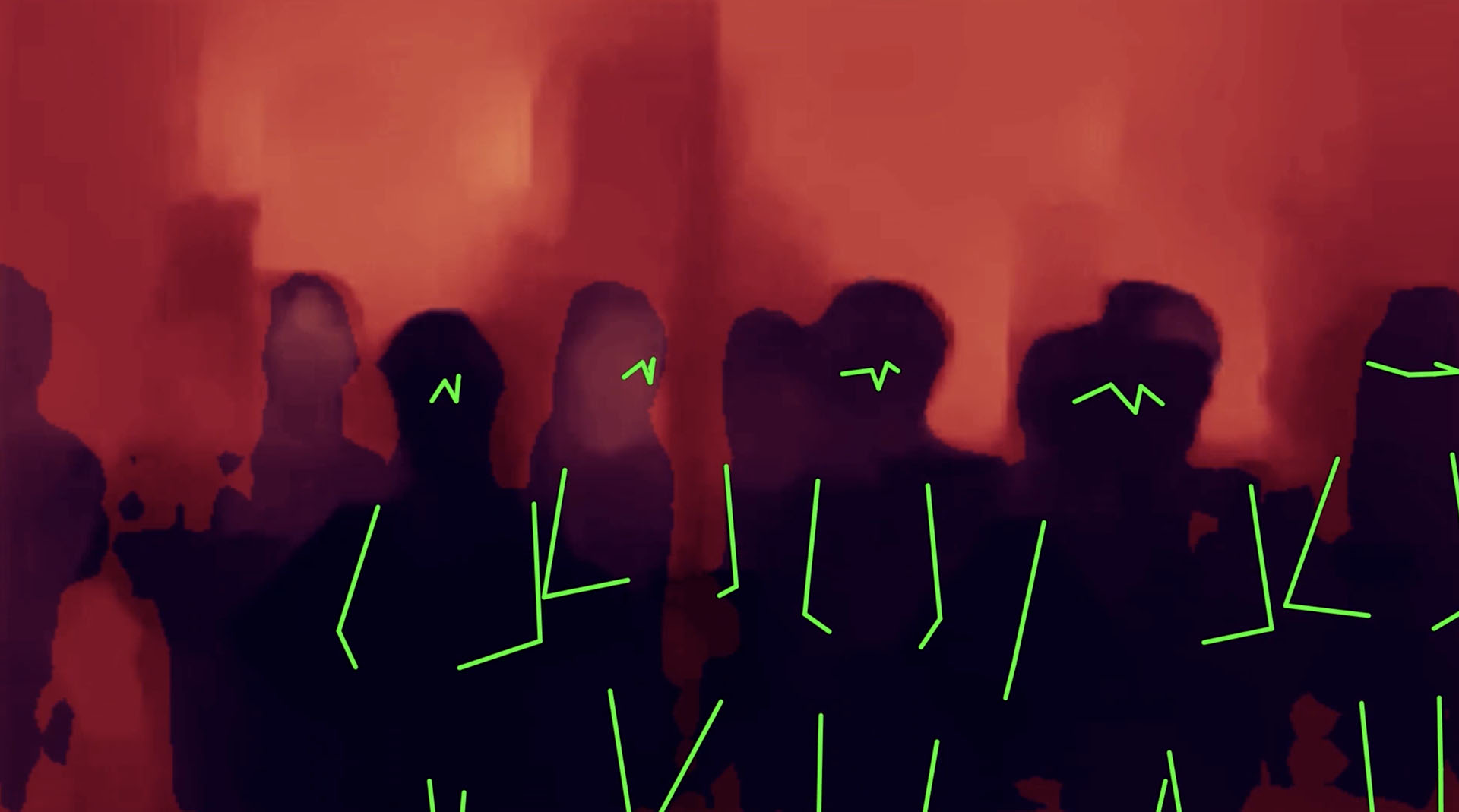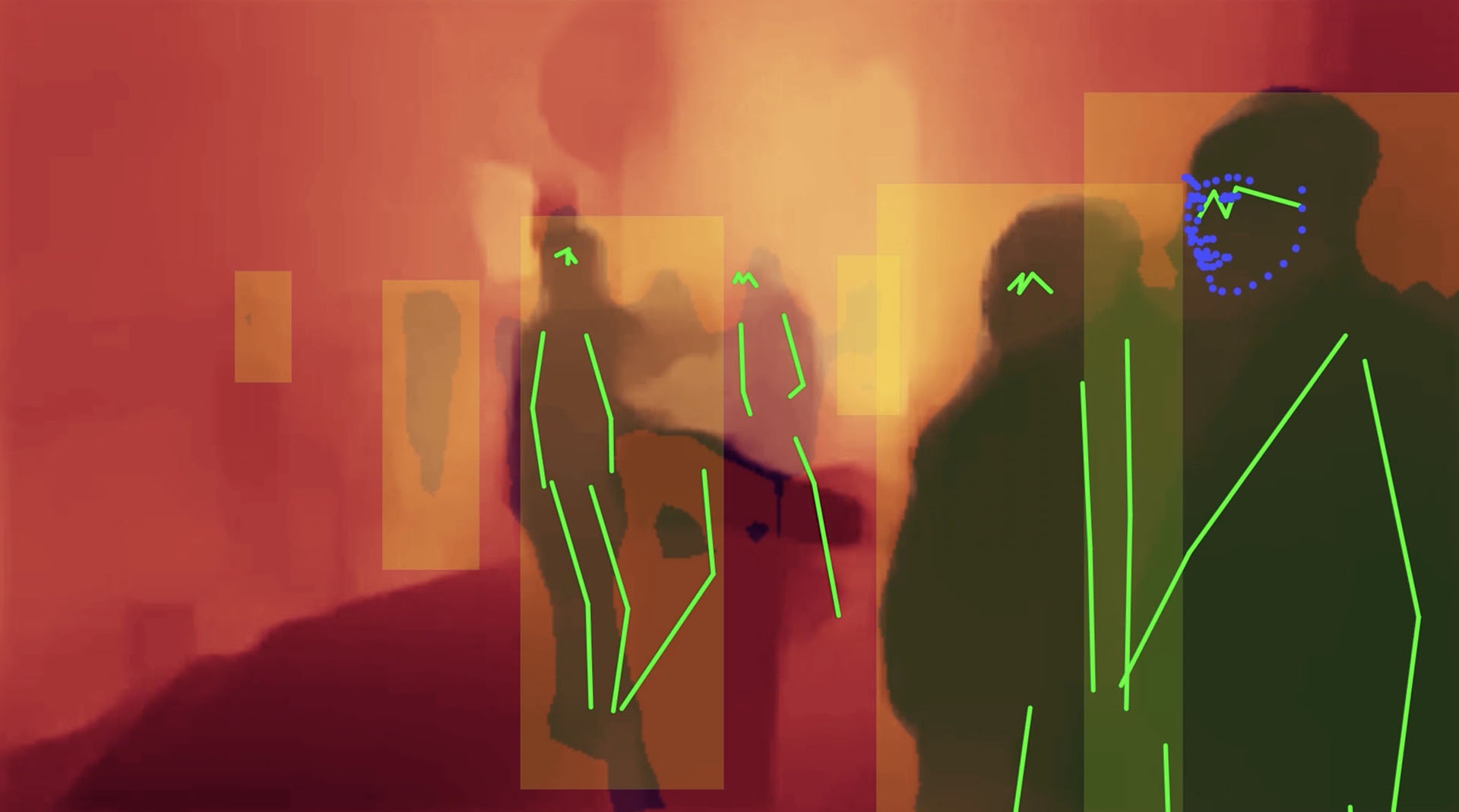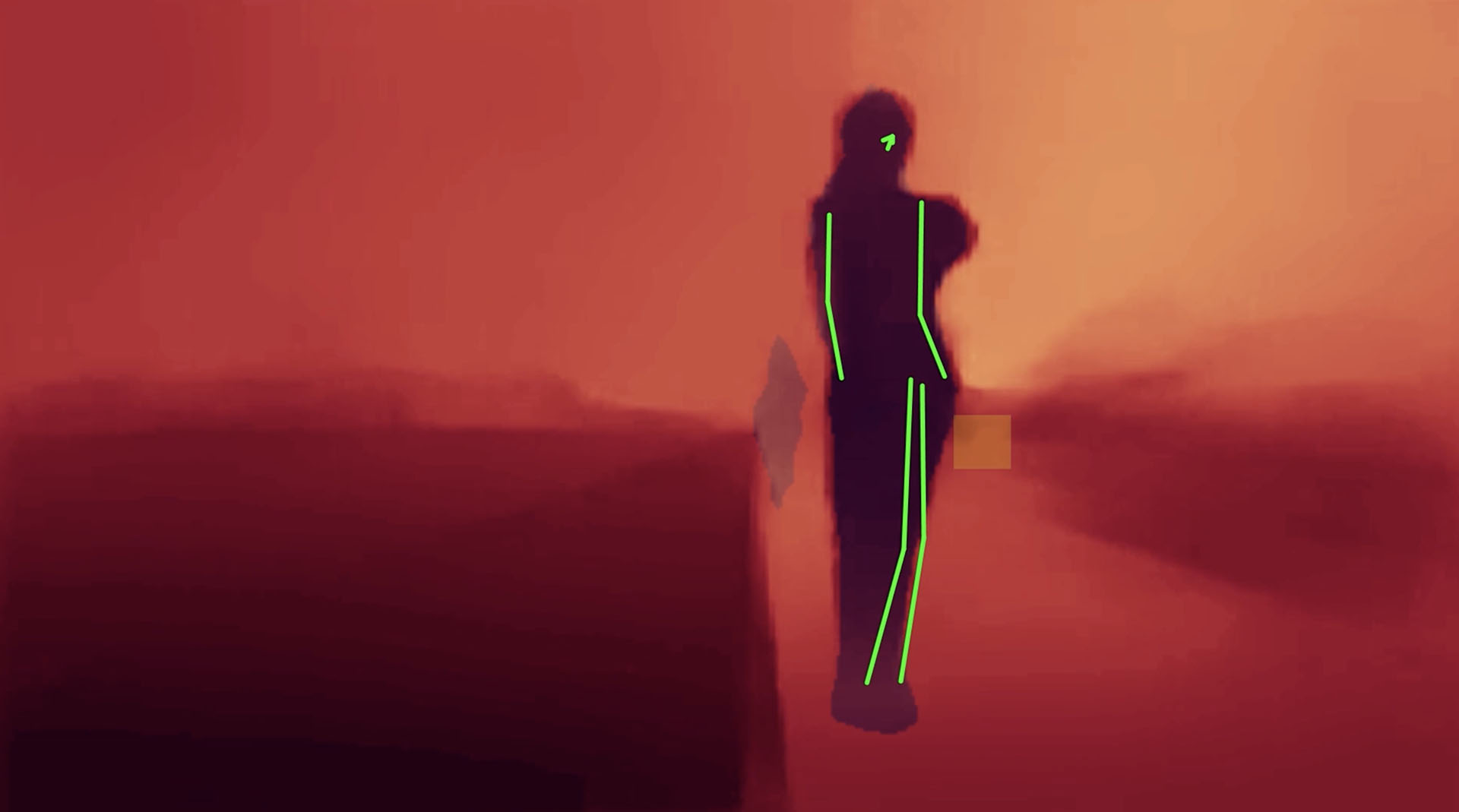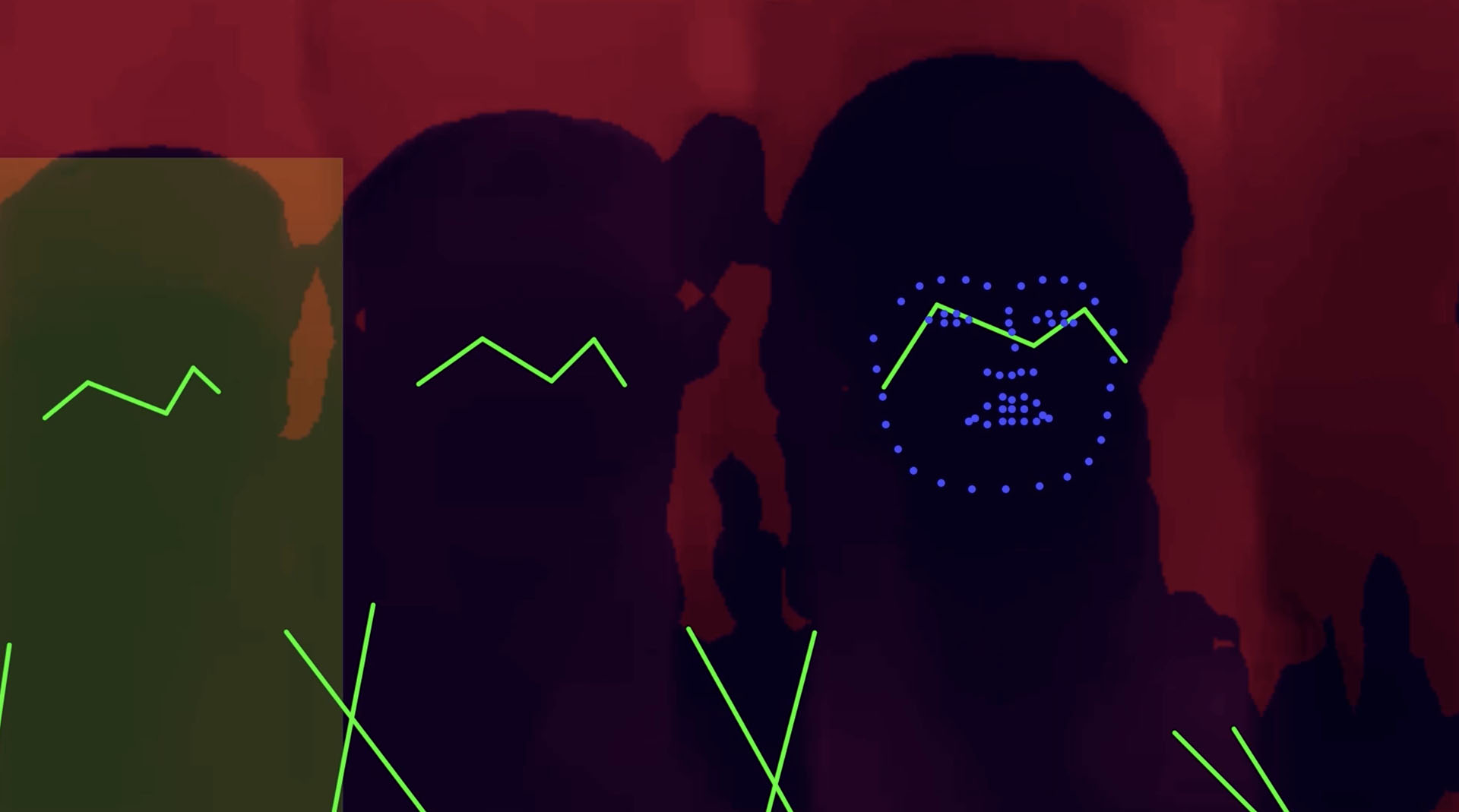All Watched Over by Machine of Loving Grace Ver 1.1b
The starting point of Emidio Battipaglia’s project All Watched Over by Machine of Loving Grace Ver 1.1b is the eponymous BBC documentary by Adam Curtis (2010), which argues that humanity has been "colonised" by computers. The nearly 3-hour video addresses the widespread deployment in the People's Republic of China of a CCTV architecture connected to machine vision systems, a technology used as a coercive control system in urban space and as an efficient communicational tool of the regime. Despite the country being systematically quoted in surveillance studies, not much is known though about the specifications of these systems, which remain a black box. Battapaglia’s project combines several layers of image recognition technologies, such as depth maps, movement prediction, body detection and face detection, using the official footage of the 70th anniversary celebrations of the country. Using the perfectly choreographed images of soldiers marching and tanks rolling as raw data, the project offers a conceptual counter-model to the allegedly dissident or illegal activities, video-surveillance and the correlated social credit system aim to repress. Counter-surveillance strategies have been endorsed by numerous artists in recent years, especially since the exponential growth of dark activities by US government agencies since 9/11. Machine vision has been developed conjointly by military and industry for decades and its uses have become more diversified, as notoriously shown by Harun Farocki in his film War at Distance in 2003. And as pointed out by Grégoire Chamayou in his book Drone Theory (2015), machine vision raises far-reaching ethical, legal and political concerns: automated decision-making is now even used in lethal drones strikes. The politics of surveillance are now shaped by automated assessments, with all the biases and errors the technologies entail, and have given unrestrained agency and responsibility to supposedly intelligent systems.
Text by Claus Gunti

